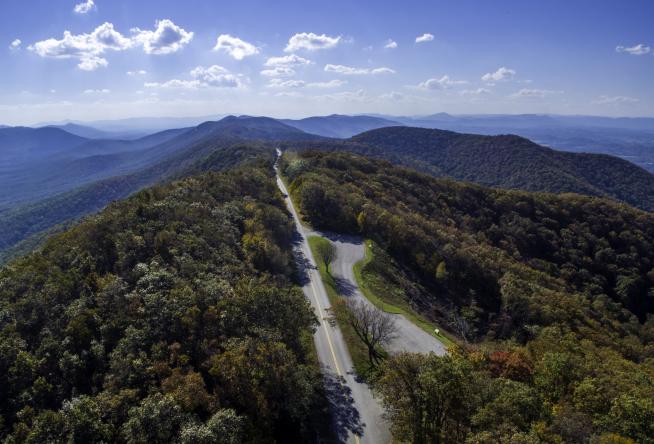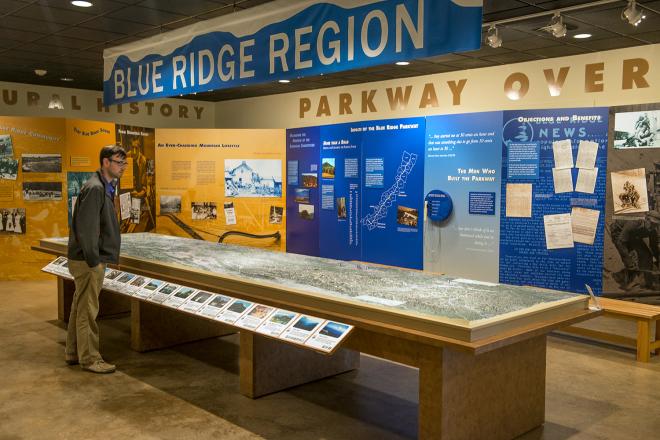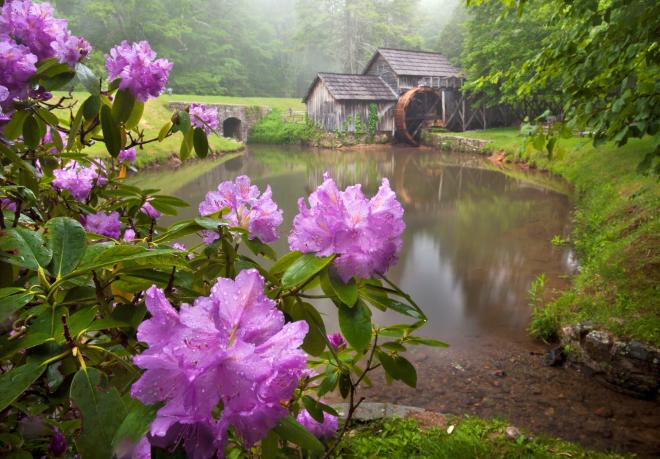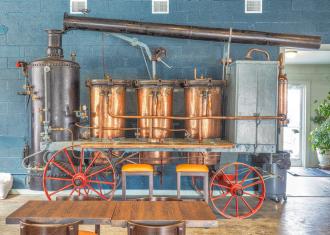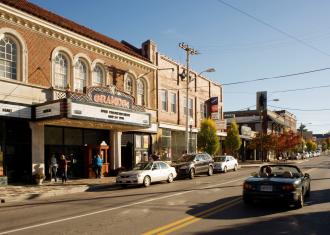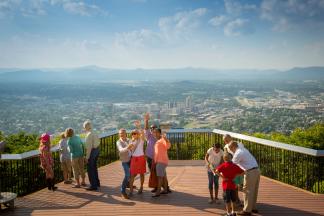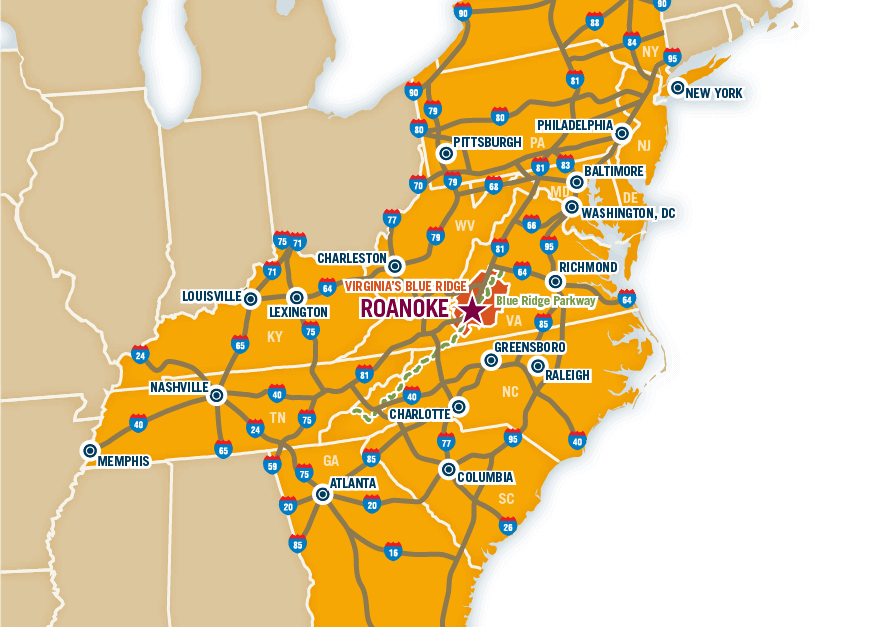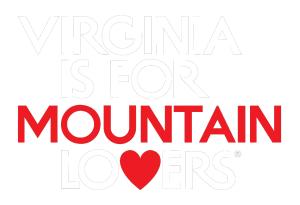The Blue Ridge Parkway is one of Virginia’s greatest treasures and a favorite scenic drive for visitors and residents alike. In fact, it has been called “America’s Favorite Drive” for a long time, and we believe that’s for good reason. The pace is slow enough for sight-seeing, wildlife are plentiful, hikes are rewarding, and some of our favorite places are along the way.
Learn a bit about the iconic Blue Ridge Parkway and then plan to drive it yourself as part of your visit to Virginia’s Blue Ridge.
General History on the Construction of the Blue Ridge Parkway
If you ever wondered which came first - Skyline Drive or the Blue Ridge Parkway – here’s your answer: Skyline Drive. Harry Byrd, United States Senator from Virginia, suggested to President Franklin Roosevelt during his 1933 visit to Skyline Drive that the impressive mountaintop road be extended from Shenandoah National Park to another new national park: Great Smoky Mountains National Park. Not off-put by the idea, Roosevelt called upon the governors of the affected states and on November 24, 1933, the “park-to-park” road was approved to move forward.

Tap the breaks…
The idea of a mountaintop scenic road goes all the way back to 1909. Called the “Crest of the Blue Ridge Highway,” it was the brainchild of Col. Joseph Hyde Pratt, the director of the North Carolina Geological and Economic Survey. Segments of the highway were started but World War I halted progress, causing the project to be abandoned.
Back to the 1930s…
As part of the New Deal’s Public Works Administration, $16 million was budgeted for the Blue Ridge Parkway project (so named in 1936), and a New York landscape architect was chosen to cast the vision and oversee its progress. That was 29-year-old Stanley Abbott, who lived in Salem while working on the project. He meticulously planned each overlook, which trees to keep to frame the perfect views, and where to add in rhododendron and other flowering plants to make the viewshed even more breathtaking.
>> Iconic Blue Ridge Parkway Overlooks in Virginia’s Blue Ridge
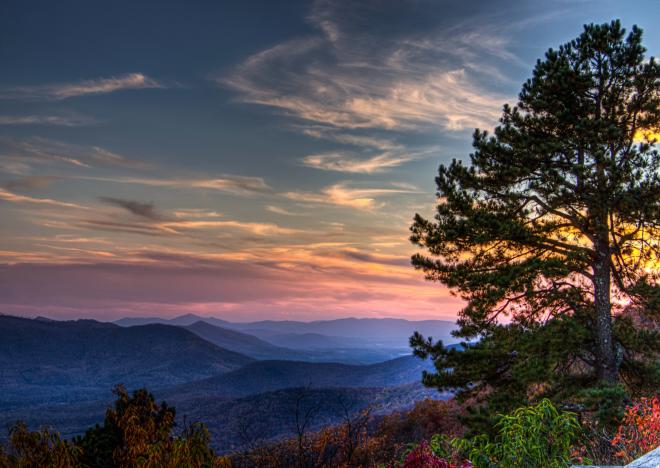
Though construction stalled again as World War II was waged and the workforce was sent into battle, the project was not abandoned. By 1950 half of the road was complete and portions could be driven, though the road was not yet paved. The largest hurdle to completion was negotiating the terrain of Grandfather Mountain in North Carolina. The solution was the Linn Cove Viaduct, the last piece of the puzzle. In 1987, the 469-mile Blue Ridge Parkway was finally finished.
Dig deeper into Blue Ridge Parkway history with Driving Through Time: The Digital Blue Ridge Parkway >
Fun Fact: Stanley Abbott later designed the master plan for Mill Mountain Park in Roanoke, which includes a spur road from Mill Mountain to the Blue Ridge Parkway. If you're interested in history, Mill Mountain has quite a story of its own. Read more about the history of Mill Mountain >
Peaks of Otter
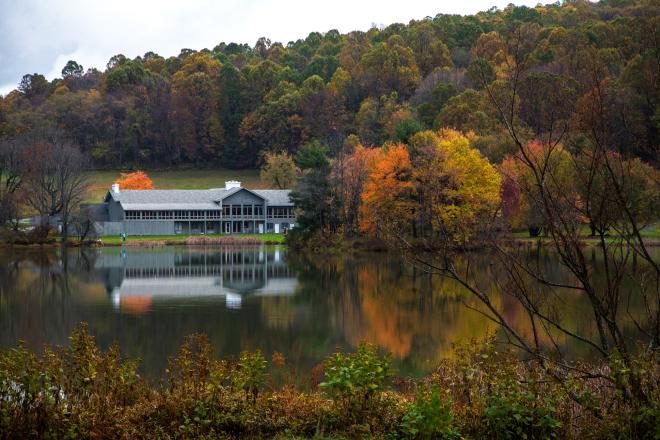
A primary stop along the Blue Ridge Parkway, the Peaks of Otter (Milepost 85.6) is a destination for relaxation and soaking in nature. The peaks themselves – Sharp Top, Flat Top, and Harkening Hill – cast shadows onto the small valley and manmade Abbott Lake below.
Many people hike the peaks, and for good reason. The views are wide and the climb can be tough. Thankfully rest and nourishment await at the bottom at Peaks of Otter Lodge. Eat well in the dining room and sleep tight in the comfortable rooms. Built in 1964, the Lodge is the fourth such accommodation at Peaks of Otter. The first was Polly Wood’s Ordinary in 1834, which is still standing on the northeast corner of the lake. The Otter Peaks Hotel came next in 1857, followed by The Hotel Mons in 1920.
History doesn’t stop with Peaks of Otter Lodge. Rather, it’s just the beginning. Take time to explore the Johnson Farm, a living history stop complete with a farmhouse. Afterward, take a drive to Peaks of Otter Winery and Johnson’s Orchard.
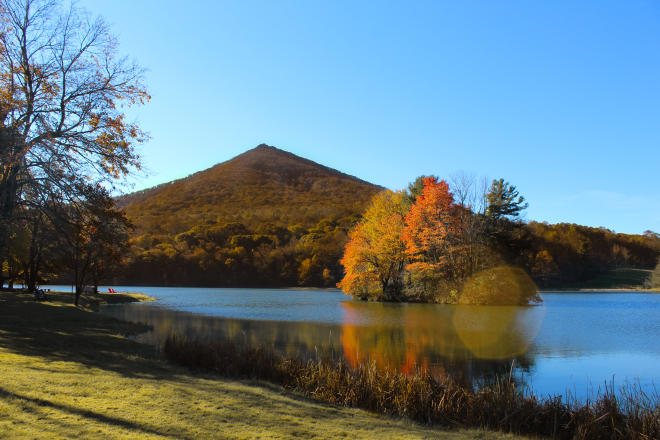
Admire the beauty of Sharp Top reflected in Abbott Lake, manmade on what once was a “boggy meadow” and a Smithsonian dig site, according to FriendsofBRP.org. The dig “uncovered that Native Americans used to hunt elk thousands of years ago” in the area.
Dig deeper into Peaks of Otter history with the National Park Service >
Fun Fact: Sharp Top is not the highest peak in Virginia, but it does have some huge house-sized boulders at the top. In fact, one was removed to become part of the Washington Monument.
>> Iconic Mountains in Virginia’s Blue Ridge: Peaks of Otter
Explore Park
The Explore Park is a 1,100-acre destination at milepost 115 on the Blue Ridge Parkway. Visitors are greeted with rest and welcome facilities at the Blue Ridge Parkway Visitor Center, featuring maps and assorted resources to get started on a leg-stretching adventure.
Trails intersect all over the park leading to and past historic buildings, including the early 1800s Mountain Union Church relocated from Botetourt County. The church is available for weddings and makes for a beautiful setting.
Explore Park shines as an outdoor recreation destination. Miles of trails ultimately lead to the Roanoke River, a great place to fish and paddle, as well as the new option for weekend tube rentals. Both hikers and mountain bikers are welcome on the trails, with a few of the trails exclusive to one or the other. A mountain bike skills park will help novice trail riders polish their pedaling.
Luxury and primitive camping and cabins afford an overnight stay for travelers who wish to experience every ounce of Explore Park. RVs are also at home at Explore Park. See overnight lodging options at Explore Park >
More Stops Along the Way
- Many hikes begin along or cross the Blue Ridge Parkway, including the Appalachian Trail. Take advantage of this list of 10 Easy Hiking Trails on the Blue Ridge Parkway
- Mabry Mill is located at milepost 176 and is one of the most photographed places on the Blue Ridge Parkway.
- Chateau Morrisette Winery & Restaurant is a welcome sight at milepost 171.5. Their award-winning wines and tasty meals match their wonderful views.
- Pitch a tent or pull in your RV for a night or more at Rocky Knob Campground at milepost 167. Hiking is the thing to do at Rocky Knob.
The Blue Ridge Parkway is a part of the National Park Service and is managed as such. Consult the NPS Website for additional historical information, travel alerts, and an interactive map with info about road closures. We’ve also found this article by Smithsonian Magazine to be of interest. Happy trails!
Interested in more history in Virginia’s Blue Ridge? Take a look at this list of 15 Spots for History Buffs and our History Lovers Sample Itinerary.
The days of illegal moonshine are long gone. Or are they? A visit to Franklin…
The “Jewel of the Blue Ridge” is glistening Smith Mountain Lake, a…
Part of the experience of visiting Virginia’s Blue Ridge is getting a…
Roanoke’s architecture is varied and somewhat unexpected for those…
Every city has a hidden gem or two, and Grandin Village happens to be one of…

